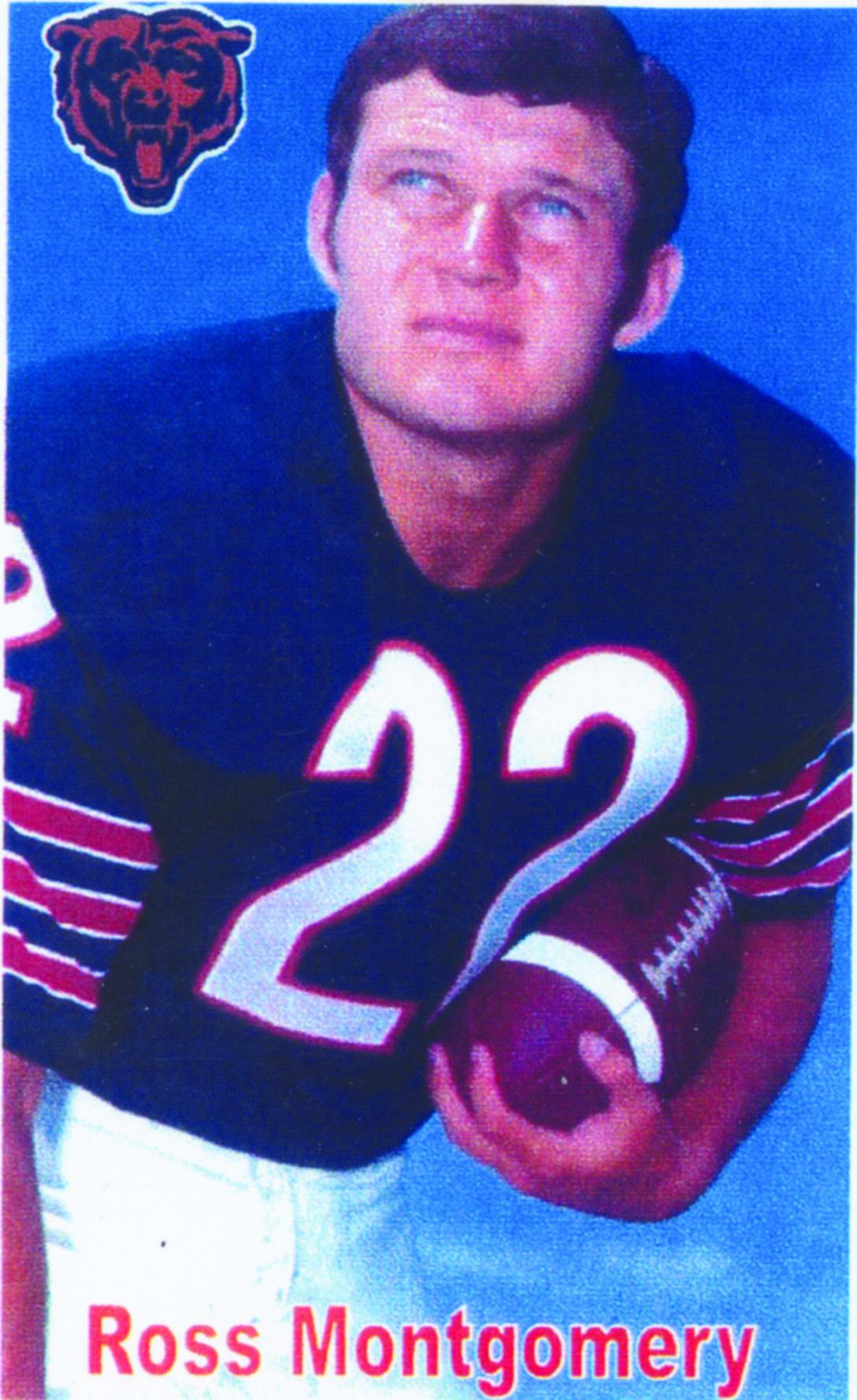Professional football leads to family ranch, public service

By Sam Waller
For former Shackelford County judge Ross Montgomery, a brief stint in the National Football League was just a precursor to his true calling.
After two seasons as a running back with the Chicago Bears, Montgomery left the gridiron behind to take a job with Exxon in Houston. Along the way, he married his wife, Martha, whom he met while in college at TCU. The couple will celebrate their 52nd anniversary in June.
The big move came in 1974, when the couple moved to Shackelford County to help Montgomery’s grandfather, Bertram Elliott, run the family ranch.
“This was my career goal my whole life,” Montgomery said.
Montgomery was the second generation of his family to play professional football. His father, Jim, played 11 games for the Detroit Lions in 1946 after serving in the Army during World War II. Jim Montgomery was an offensive lineman who played at Moran and Texas A&M.
Ross Montgomery was actually born in Detroit during the 1946 season before the family returned to Texas, settling in Midland where he played for the Midland High Bulldogs from 1961-64.
“Ross’ mother (Betty) told Jim after one year in Detroit she wasn’t going to raise a baby in Detroit,” Martha Montgomery said. “She was going back to Moran.”
Ross Montgomery still holds the Midland High career record for most punts attempted with 112.
At TCU, he earned All-Southwest Conference honors as a freshmen in 1965 and as a junior in 1967. At the time, freshmen were ineligible for varsity competition.
He finished his college career with 1,812 rushing yards and 444 receiving yards.
He was picked by the Bears in the third round of the 1969 draft.
“It was a great experience playing professional football,” Montgomery said. “I was there with Gale Sayers and Brian Piccolo and Dick Butkus.”
Unlike today’s NFL, the majority of players had to hold down a second job to make ends meet. Montgomery’s signing bonus – a 1969 Pontiac Grand Prix – would have been beyond his means under normal circumstances. The car outlasted his playing career.
“Getting out of college, I got a good contract to play football,” he said. “And my grandfather needed help on the ranch, so we came out here and went to ranching.”
During his playing career, Montgomery also served in the National Guard, conducting his training in Houston before rejoining the team for games.
“He had to fly to Houston, then to wherever the Bears were playing, like out to San Francisco,” Martha said.
Montgomery’s Guard unit was not exactly one the Bears’ organization was pleased with.
“The only thing I could get into was Airborne, so I would jump out of airplanes,” he said. “I told them I never jumped out, but I did get kicked out several times.”
It was during his rookie season that Montgomery had a peripheral role in one of the iconic legends of Bears history.
“Brian Piccolo thought he had a cold, and I did have a cold,” Montgomery said. “We went to the doctor together, and they X-rayed our chests. The next day, they said he had a lump in his chest as big as a grapefruit and took him to New York to operate on him. Then he died during the offseason.”
The tale was immortalized in the 1971 television movie “Brian’s Song,” which starred James Caan as Piccolo and Billy Dee Williams as Sayers.
In his two seasons, Montgomery rushed for 278 yards and had 83 yards receiving. He started eight of 14 games in 1970.
The move to the ranch was a big change for his wife, who grew up in Austin and was teaching school in Houston.
“I thought I’d gone to the end of the world,” she said. “But once I was out here a while, it was like the best of both worlds. You can always get back to the city, but you’ve got the peace and quiet of the country.”
Montgomery still follows the game, particularly enjoying TCU’s run to the national championship game this season.
“I still keep up with TCU, and we go in to some of the TCU games,” he said. “I watch football games on TV all the time. It was a lot of fun watching TCU this season.”
In addition to ranching, Montgomery was active in the county, serving on boards for the Moran bank and school district before running for county judge in 1994. After that, his name was the only one on the ballot as he ran unopposed the next five elections.
During his time in office, the Shackelford County Courthouse underwent a major renovation. The project, completed in 2001, was the first done under the Texas Historic Courthouse Preservation Program, which was established in 1999 by the Texas Legislature to provide partial matching grants to Texas counties for the restoration of their historic county courthouses.

